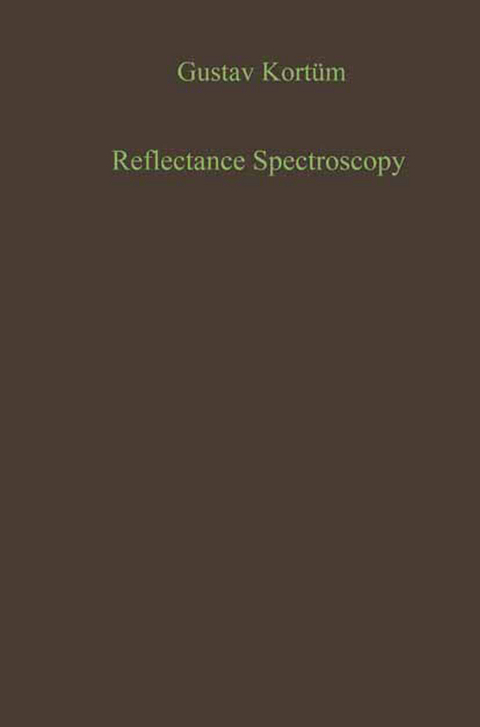
Reflectance Spectroscopy
Springer Berlin (Verlag)
978-3-642-88073-5 (ISBN)
I. Introduction.- II. Regular and Diffuse Reflection.- a) Regular Reflection at Non-Absorbing Media.- b) Total Reflection.- c) Regular Reflectance at Strongly Absorbing Media.- d) Definition and Laws of Diffuse Reflection.- e) Experimental Investigation of Diffuse Reflection at Non-Absorbing Materials.- f) Diffuse Reflectance at Absorbing Materials.- g) Dependence of Remission Curves on Particle Size.- III. Single and Multiple Scattering.- a) Rayleigh Scattering.- b) Theory of Scattering at Large Isotropic Spherical Particles.- c) Multiple Scattering.- d) The Radiation-Transfer Equation.- IV. Phenomenological Theories of Absorption and Scattering of Tightly Packed Particles.- a) The Schuster Equation for Isotropic Scattering.- b) The Kubelka-Munk Exponential Solution.- c) The Hyperbolic Solution Obtained by Kubelka and Munk.- d) Use of Directed Instead of Diffuse Irradiation.- e) Consideration of Regular Reflection at Phase Boundaries.- f) Absolute and Relative Measurements.- g) Consideration of Self-Emission or Luminescence.- h) Attempts at a Rigorous Solution of the Radiation-Transfer Equation.- i) Discontinuum Theories.- V. Experimental Testing of the "Kubelka-Munk" Theory.- a) Optical Geometry of the Measuring Arrangement.- b) The Dilution Method.- c) Concentration Dependence of the "Kubelka-Munk" Function F(R?).- d) The Typical Color Curve.- e) Influence of Cover Glasses.- f) Scattering Coefficients and Absorption Coefficients.- g) Influence of Scattering Coefficients on the "Typical Color" Curve".- h) Particle-Size Dependence of the Kubelka-Munk Function.- VI. Experimental Techniques.- a) Test of the Lambert's Cosine Law.- b) The Integrating Sphere.- c) Measuring Apparatus.- d) Measurements with Linearly Polarized Radiation.- e) The Measurementof Fluorescent Samples.- f) Influence of Moisture on Reflectance Spectra.- g) Preparation of Samples for Measurement.- h) Adsorption from the Gas Phase and from Solution.- i) Measurements in the Infrared.- k) Discussion of Errors.- VII. Applications.- a) The Spectra of Slightly Soluble Substances, or Substances that are Altered by Dissolution.- b) Spectra of Adsorbed Substances.- c) Kinetic Measurements.- d) Spectra of Crystalline Powders.- e) Dynamic Reflectance Spectroscopy.- f) Analytical Photometric Measurements.- g) Color Measurement and Color Matching.- VIII. Reflectance Spectra Obtained by Attenuated Total Reflection.- a) Determination of the Optical Constants n and ?.- b) Internal Reflection Spectroscopy.- c) Methods.- d) Applications.- Appendix: Tables of the Kubelka-Munk-Function.
| Erscheint lt. Verlag | 11.4.2012 |
|---|---|
| Übersetzer | James E. Lohr |
| Zusatzinfo | VI, 366 p. |
| Verlagsort | Berlin |
| Sprache | englisch |
| Maße | 155 x 235 mm |
| Gewicht | 568 g |
| Themenwelt | Naturwissenschaften ► Chemie ► Analytische Chemie |
| Naturwissenschaften ► Chemie ► Physikalische Chemie | |
| Schlagworte | Adsorption • chemical reaction • Crystal • diffraction • Energy • Phase • Radiation • Reactions • Reflexionsspektroskopie • Refractive index • Sorption • Spectra • spectroscopy |
| ISBN-10 | 3-642-88073-8 / 3642880738 |
| ISBN-13 | 978-3-642-88073-5 / 9783642880735 |
| Zustand | Neuware |
| Haben Sie eine Frage zum Produkt? |
aus dem Bereich


